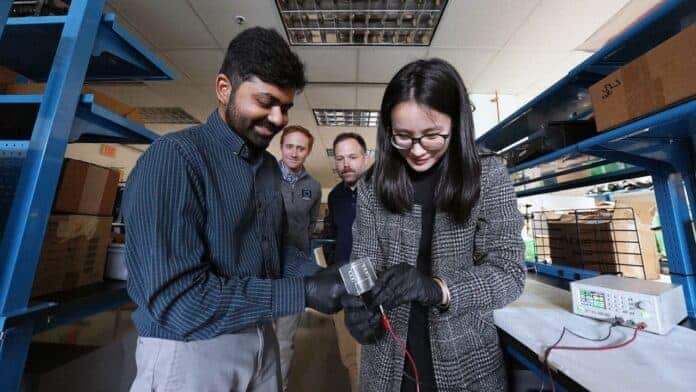Virginia Tech Engineers Develop Durable, Self-Repairing Materials

A groundbreaking advancement in electronics has emerged from a team of scientists who have created a self-healing circuit board capable of maintaining functionality even after significant mechanical damage. This innovative technology, which incorporates liquid metal and a unique polymer called vitrimer, promises to revolutionize consumer electronics by enhancing durability and reducing electronic waste. The new circuit boards can be reshaped or fully recycled using heat, addressing a critical environmental issue associated with traditional circuit boards.
Innovative Composition and Functionality
The newly developed circuit boards are made by blending vitrimer with a mere 5% by volume of liquid metal droplets. This combination significantly enhances the material’s stretchability, nearly doubling its strain-at-break compared to vitrimer alone. The liquid metal droplets not only contribute to the board’s flexibility but also serve as conductors, replacing the metal wiring typically found in conventional circuit boards. Tests conducted using a rheometer demonstrated that these boards can return to their original shape after being deformed by heat, a feat that traditional epoxy-based thermosets cannot achieve. This self-healing capability is a significant leap forward in electronic design, allowing for repairs without sacrificing electrical performance.
Environmental Impact and Recycling Potential
The environmental implications of this new technology are substantial. Current circuit boards, primarily made from thermosetting plastics, are notoriously difficult to recycle and often end up in landfills. According to a 2024 UN report, electronic waste has surged from 34 billion kilograms to 62 billion kilograms in just 12 years. The new vitrimer-based circuit boards offer a solution by enabling easy separation and reuse of materials, even if the boards are damaged. Co-lead author Michael Bartlett emphasized that the electrical performance of these boards remains intact, presenting a promising avenue for reducing electronic waste and fostering a circular economy in electronics.
Future Applications and Development
While the researchers acknowledge that further work is needed to enhance the recovery of certain elements, they view this development as a significant step toward greener electronics. The potential applications for this technology are vast, with possibilities ranging from smartphones and laptops to wearables and televisions. As the industry moves toward more sustainable practices, the introduction of self-healing circuit boards could fundamentally change how devices are manufactured, operated, and recycled, paving the way for a more environmentally friendly future in technology.
Observer Voice is the one stop site for National, International news, Sports, Editor’s Choice, Art/culture contents, Quotes and much more. We also cover historical contents. Historical contents includes World History, Indian History, and what happened today. The website also covers Entertainment across the India and World.

